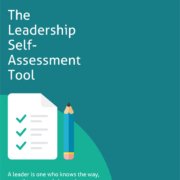Senior Living Sales: Characteristics of Super Star Sales Talent
The National Investment Center for Seniors Housing & Care (NIC) reported that assisted living occupancy reached a new low last quarter (Q2-2019).
If you operate an assisted living facility (or other type of senior living community), what can you do to remain competitive and boost occupancy? You can’t change your location, product, or competitors. You probably don’t want to turn over the management team or cut rate. You might even think you have the best community (your competitors probably think the same thing). You say that you care more, that you have the best team, that you are resident-focused, just like everyone else says.
How can you improve your sales conversions?
Well, for one thing, you need a super star sales counselor, and they are a rare breed. But if you know what to look for, you might just be able to find one in the wild. Here are the five top characteristics of the best senior living sales talent.
1. The Best Senior Living Sales Rep Sees Prospects as Real People.
Unfortunately, too many sales people in our industry treat prospects as a commodity. These sales folks tend to take the position of “subject expert.” They want to be right, and they believe they have heard it all before. They perceive prospects as numbers and assign them a value: top 10, hot, warm, cold, or future. This value assignment drives their effort and engagement. Their approach is to talk prospects into the community, and they often use fear and manipulation to create urgency.
You want to avoid this type of sales “talent” at all costs.
Because the greatest sales people seek to understand the prospect’s wants, needs, and goals. Solving the problem on behalf of the prospect is their biggest concern—and they are passionate that they have the best solution. This dedication to the prospect drives their engagement.
2. The Best Senior Living Sales Rep Sells Value, Not Features.
After listening to thousands of mystery shops, it’s clear that too many sales people still approach interactions as a transaction. They spend most of the time talking, listing every feature, and hoping something will stick.
Great sales people spend time developing rapport with the prospects. In other words, they take a relational approach. They listen and reflect back what they hear to demonstrate that they care about the prospect. This builds enough trust to empower the prospect to open up and communicate their needs and goals. After this, the sales person can focus on personalizing the value of their community to each individual prospect.
3. The Best Senior Living Sales Reps Are Respectfully Persistent.
Rejection is common in sales since more prospects will say “no” rather than “yes.” Most sales people give up after a couple of attempts because they are uncomfortable with rejection. But what these sales folks don’t understand is that it often takes multiple attempts simply to connect and build rapport. Still, these sales people would rather focus on the new leads and hot leads rather than nurture the leads that aren’t ready yet.
The greatest sales counselors understand that most prospects are stressed and emotionally exhausted. The best sales counselors know it takes multiple attempts to engage and build trust. They focus on what they can do and they are politely persistent in staying connected. They do not take rejection personally because they understand that when someone is making an emotional decision, the path is rarely linear.
These sales folks also embrace technology that can help nurture these “not ready” leads over time. They work with marketing to make sure relevant lead nurturing workflows are set up that will resonate with different buyer personas.
4. The Best Senior Living Sales Rep Are Not Afraid of Silence.
Super star sales counselors leave space for silence to give prospects time to process the information. This type of sales person wants to hear what’s important to the prospect (or what the prospect is questioning).
In an interview, I always ask why the candidate thinks they will be successful in a sales role. The interview is over when they say, “I’m a good talker!” This type of sales person will not do well in an emotional selling environment because they will make the conversation about them, rather than about the prospect. Instead, I always perk up if the job candidate says, “I’m a good listener. I hear what people are saying and can respond accordingly.”
5. The Best Senior Living Sales Reps Embrace Follow Up – Creatively, Personally, and Energetically!
It takes energy, effort, and optimistic persistence to continue to follow up with prospects over the course of their sales journey. Prospects inquire, go dark, re-engage, and change direction throughout the process. Most sales people work the hot leads and new leads because they are only interested in closing sales in the next 30 days—they’re not thinking about the long game.
Super stars realize they need to keep the pipeline full with leads at every stage of their journey. They meet them where they are and stay in touch throughout the sales cycle – without any strings attached. Super stars drop off dinner, write a personal note (yes, handwritten!), leave a plant with a note on a doorstep, and/or send a book they know will help. When they leave a voicemail, it’s to let the prospect know they are thinking of them, not just “checking in” for an update.
Bottom line: When it comes to filling your community with super star sales talent, hire for heart first. You can always train them on specific skills as they go along.






